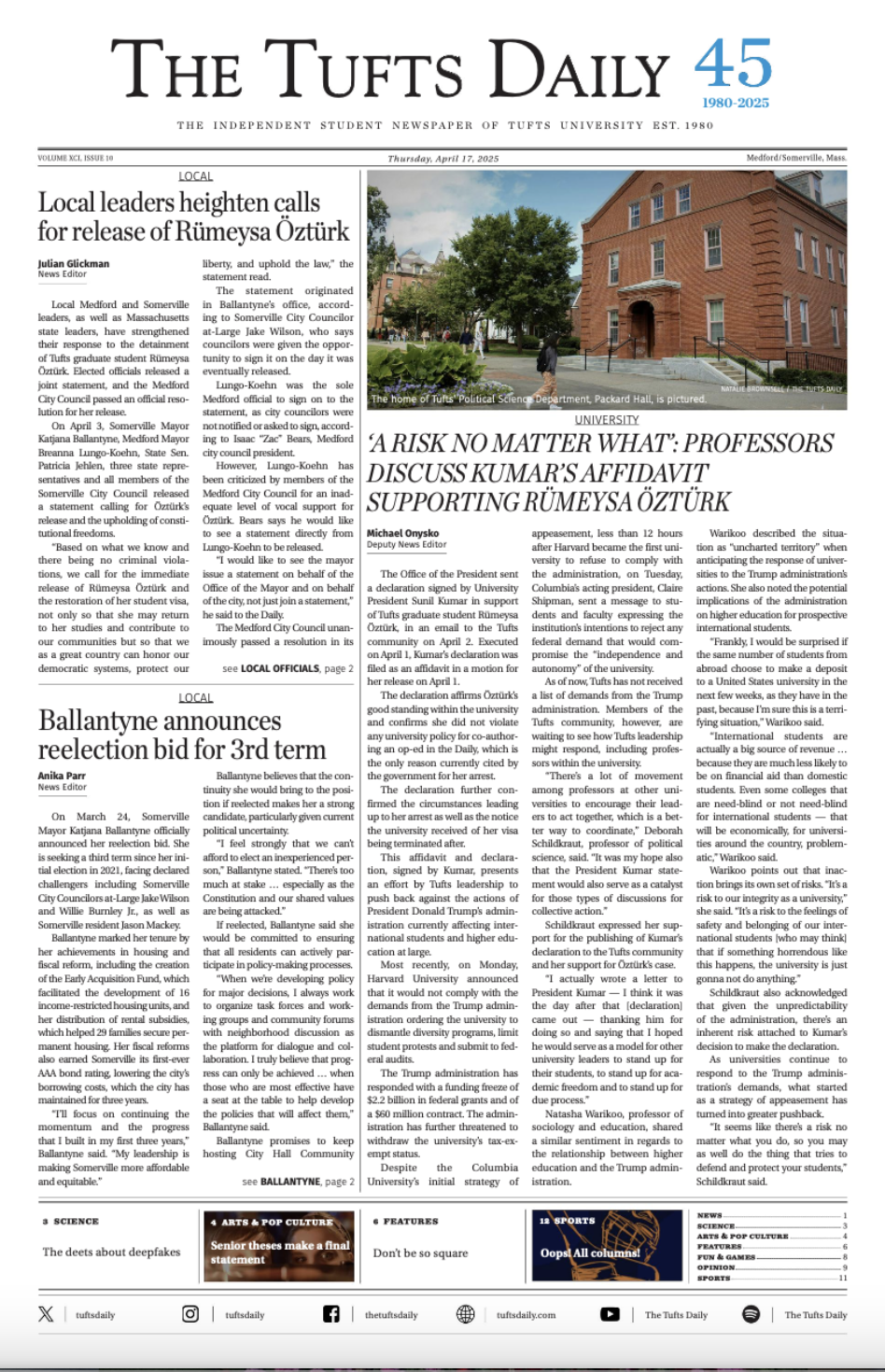What do you major in if you want to change the world? International relations? Peace and justice studies? I propose an alternative: art history. There are only 16 seniors graduating this spring with a degree in art history. What this tells me is that the subject has yet to shed its reputation as an esoteric, purely aesthetic discipline. However, all 16 of us have the capacity to make real change, and this is because art history teaches something that very few other disciplines can instill in their students: empathy.
In my first art history class at Tufts, 19th Century Art (FAH 55), we spent several weeks learning about the paintings of Jacques-Louis David, whose works serve as a visual documentation of the French Revolution and the Napoleonic years. His paintings provide insight into the French psyche during this tumultuous period. While my history professor’s lectures on the Revolution provided a thorough understanding of why certain events happened when they did, my art history professor’s visual analyses of David’s paintings situated actual people within the context of revolutionary France. Contorted faces and bleeding bodies made me feel afraid and angry. The clash of silver swords, reflecting against glistening pillars, instilled patriotism in me for a country of which I’m not a citizen. I came to empathize with David and the population he represented.
In today’s stratified world, the ability to foster empathy is a valuable one. What if grade school and high school history classes were actually taught this way, combining history with art? Would students learn empathy along with strings of dates? Art has the power to incite emotion in the viewer. Imagine for a moment that a lecture on race in America included included a study of Kara Walker’s paintings. A good teacher will make you understand and care about America’s history of institutionalized racism. Walker’s stark depiction of racial stereotypes in America will make you FEEL something — sadness, anger, fear, motivation to take action.
If America is ever to be safe for POC and other marginalized identities, then today’s youth needs to be taught how to care about people that are different from them. I argue that fostering empathy through art has the potential to do so.
While my vision for a reimagined public school system may be far from implementation, we at Tufts have control over our course schedules. I urge you to consider studying art history seriously or supplement your education with a course in empathy—I recommend contemporary art if you’re passionate about current events or an Islamic art class if you’re focused on the Middle East. If you’re like me and intrigued by the history of socialism, you can watch it unravel through the brushstrokes of different artists over the course of the 19th and 20th centuries.
Art history will teach you to empathize with faceless names in history books and with people whose opinions you don’t share. An interdisciplinary approach to history and current events may very well be the key to conflict resolution. After all, if we don’t understand the emotions driving people’s behavior, how can we ever hope to find common ground?
-Chloe Hyman, Polykhroma
More from The Tufts Daily





